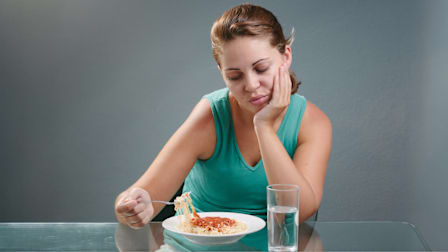How to Eat Cheese in a Healthy Way
These four tips will help you enjoy this protein- and calcium-filled favorite without overloading on fat and calories

A buttery Brie, some zippy Gorgonzola, a sprinkle of nutty Parmesan—whether cheese is eaten on its own or as an ingredient in recipes, Americans love it. Annual consumption has been growing steadily for decades, and last year reached about 39 pounds per person; that’s about three-fourths of a pound per week. But as we nibble away, concerns about calories, sodium, and fat persist. So where does cheese fit in a healthy diet?
“Cheese is a nutritious food. It’s a concentrated source of protein and calcium,” says Joan Salge Blake, RDN, a clinical professor of nutrition at Boston University and host of the nutrition and health podcast Spot On. An ounce of cheddar, for instance, has almost 200 mg of calcium and 8 grams of protein.
Where we often go wrong is in the way we eat it (on pizza, in deli sandwiches, with crackers). Here’s how to make cheese a nutrition win.
1. Consider Fat and Calories
The major concerns about cheese are that much of its fat is the heart-unfriendly saturated type and that it packs a lot of calories in a small amount. Brie, for example, has about 6 grams of saturated fat and 120 calories in a quarter-cup (about an ounce). That’s about one-third of the maximum amount of saturated fat someone eating 1,500 calories should have in a day. Cheeses that are lower in saturated fat and calories include fresh mozzarella, soft goat cheese, feta, and ricotta.
2. Upgrade Your Pairings
Instead of piling cheese on crackers typically made with refined grains and sometimes added sugars, pair it with fruits and vegetables, which most Americans don’t get enough of. This swap will add nutrients and fill you up more, thanks to the fiber and water in produce. Salcedo likes mozzarella balls with cherry tomatoes and basil drizzled with balsamic vinegar, and honey-whipped ricotta with fresh sliced figs and pistachios. If you like crackers, look for ones that are 100 percent whole grain and contain 150 mg of sodium or less per serving.
3. Have Cheese in Place of Meat
Trying to eat vegetarian some days? Incorporate cheese in a veggie-rich omelet, salad, soup, or grain bowl. “Cheese enhances the protein and fat intake of your meals to help promote fullness for longer,” Salcedo says, “and may delay absorption of blood sugar into the body.”
Salge Blake makes lentil soup full of vitamin-dense vegetables and completely covers the top with a thin layer of Parmesan grated with a microplane. Incidentally, if you have trouble digesting lactose (a common problem as we age), cheeses like Parmesan and manchego are a good bet. “The harder the cheese, the less lactose,” she says.
4. Try It for Dessert
Instead of following dinner with a piece of cake or slice of pie, make a small cheese plate with Brie or another favorite cheese, plus nuts and fresh or dried fruit. You’ll get calcium and protein, save a lot of added sugars, and finish your meal with a true treat.
Editor’s Note: A version of this article also appeared in the January 2021 issue of Consumer Reports On Health.




















